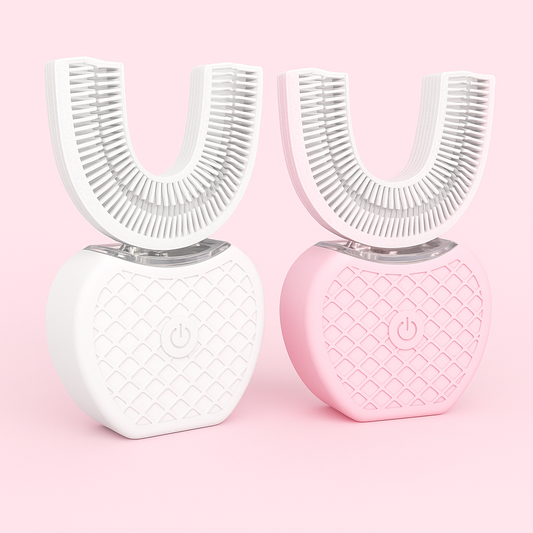Introduction
Fresh breath in dogs isn’t just about pleasant interactions and cuddles; it’s a vital indicator of their overall oral and systemic health. In 2025, pet owners have more knowledge and access to innovative tools than ever before to maintain their dogs’ oral hygiene. Bad breath, or halitosis, is often a symptom of underlying dental problems such as plaque buildup, gum disease, or digestive issues. Addressing it promptly can prevent more serious health complications and keep your dog happy and healthy.
This comprehensive guide will walk you through simple, practical, and effective ways to keep your dog’s breath fresh and their mouth healthy, utilizing the latest advancements and tried-and-true methods alike.
Understanding Bad Breath in Dogs
Before diving into solutions, it’s important to understand why dogs develop bad breath. The most common causes include:
- Poor Dental Hygiene: Plaque and tartar buildup harbor bacteria that cause foul odors.
- Periodontal Disease: Infection of the gums and supporting structures can lead to bad breath and tooth loss.
- Diet and Eating Habits: Certain foods and treats can contribute to unpleasant odors.
- Digestive Problems: Issues like gastrointestinal disorders or nausea may manifest as bad breath.
- Underlying Health Conditions: Diseases such as diabetes or kidney failure can affect breath odor.
Regular veterinary checks can help identify the root cause, but preventive care at home is key to managing and avoiding bad breath effectively.
1. Schedule Regular Veterinary Dental Check-Ups
Professional dental cleanings remain the gold standard for maintaining your dog’s oral health. Vets use specialized equipment to remove hardened tartar and plaque below the gum line, which brushing alone cannot reach. They also screen for oral tumors, broken teeth, and infections.
Key benefits of veterinary dental care:
- Deep cleaning under anesthesia for thorough plaque removal
- Early detection and treatment of dental diseases
- Advice tailored to your dog’s specific needs
- Potential prescription treatments for infections or inflammation
Most dogs benefit from annual or biannual dental check-ups, especially as they age or if they have a history of dental issues.
2. Master the Art of Brushing Your Dog’s Teeth
Daily brushing is the single most effective home care method to prevent bad breath and dental disease. While it may seem intimidating at first, with patience and the right technique, it can become a bonding ritual.
How to brush your dog’s teeth effectively:
- Use a toothbrush designed for dogs or a finger brush for better control.
- Choose toothpaste specially formulated for dogs with appealing flavors like poultry or peanut butter (never use human toothpaste as it contains harmful ingredients).
- Start slow by letting your dog taste the toothpaste and gradually introduce brushing motions.
- Focus on the outside surfaces where plaque tends to accumulate, especially the back molars.
- Brush for at least two minutes, aiming for consistency over perfection.
Establish a routine by brushing at the same time each day and rewarding your dog afterward with praise or a favorite treat.
3. Incorporate High-Quality Dental Chews and Toys
Dental chews and toys are more than just entertainment—they actively help reduce plaque and freshen breath by scraping teeth and stimulating saliva production. When selecting these products, consider the following:
- Look for products approved by veterinary dental organizations.
- Choose chews appropriate to your dog’s size and chewing style to prevent choking or digestive blockages.
- Avoid chews with artificial additives or excessive sugars.
Popular options in 2025 include enzymatic chews, rawhide alternatives made from natural fibers, and interactive dental toys that encourage healthy chewing habits.
4. Utilize Water Additives for Continuous Oral Care
Water additives are a convenient, non-invasive way to boost your dog's oral hygiene without extra effort. These solutions reduce oral bacteria and plaque formation when added to your dog’s drinking water.
Choosing and using water additives:
- Opt for products with natural ingredients and no alcohol or harsh chemicals.
- Follow dosage instructions carefully to ensure safety and effectiveness.
- Combine use with brushing and chews for a comprehensive care routine.
This method is especially helpful for dogs resistant to brushing or those with medical conditions limiting traditional care.
5. Feed Crunchy Fruits and Vegetables as Natural Toothbrushes
Certain raw fruits and vegetables can help clean teeth mechanically, scrape away plaque, and stimulate gums. They also provide essential vitamins and minerals promoting overall health.
Safe and effective options include:
- Carrots
- Apple slices (without seeds)
- Celery sticks
- Cucumber slices
Always introduce new foods gradually and in appropriate sizes to prevent choking. Avoid toxic or harmful foods such as grapes, onions, or anything seasoned with salt or sugar.
6. Support Digestive Health with Probiotics
Oral health is closely linked to digestive wellness. Imbalances in gut bacteria can contribute to unpleasant breath odors. Introducing probiotics formulated for dogs can help maintain a balanced microbiome and reduce breath issues from digestive causes.
Tips for probiotic use:
- Consult your veterinarian to select the right strain and dosage.
- Choose supplements designed specifically for canine digestive systems.
- Incorporate probiotics consistently for best results.
Probiotics also support immune function and nutrient absorption, contributing to your dog’s overall health.
7. Prepare Homemade Dental Solutions Safely
For pet owners who prefer natural approaches, homemade dental products can be an excellent supplement. Simple recipes combining dog-safe ingredients like baking soda and coconut oil can be used as toothpaste or mouth rinses.
Example homemade toothpaste recipe:
- 1 tablespoon coconut oil
- 1 teaspoon baking soda
- Optional: a few drops of parsley juice for freshening breath
Mix ingredients thoroughly and store in a clean container. Use a soft toothbrush or finger brush to apply gently to your dog’s teeth. Always verify ingredient safety beforehand and avoid toxic substances such as xylitol or essential oils.
Additional Tips for Long-Term Oral Health
- Regularly inspect your dog’s mouth: Look for redness, swelling, bleeding gums, or loose teeth.
- Provide constant access to fresh water: Hydration supports saliva production, which naturally cleans the mouth.
- Choose balanced, high-quality dog food: Certain diets are designed to reduce plaque buildup.
- Avoid sugary treats and human junk food: These can exacerbate dental problems.
- Introduce dental toys and puzzles: These help keep teeth clean while providing mental stimulation.
When to See a Veterinarian
If your dog’s bad breath persists despite home care, or if you notice symptoms such as excessive drooling, pawing at the mouth, difficulty eating, or bleeding gums, seek veterinary advice promptly. Persistent halitosis may indicate serious conditions requiring medical treatment.
Conclusion
In 2025, maintaining your dog’s fresh breath and oral health is both simple and rewarding with the right knowledge and tools. By combining regular veterinary care, consistent brushing, high-quality dental chews, water additives, healthy diet choices, probiotics, and safe homemade remedies, you can ensure your canine companion enjoys optimal dental hygiene.
Prioritizing your dog’s oral health not only prevents unpleasant odors but also supports their overall wellness, longevity, and happiness. Embrace these practical strategies today and enjoy countless moments filled with fresh breath and joyful companionship.


